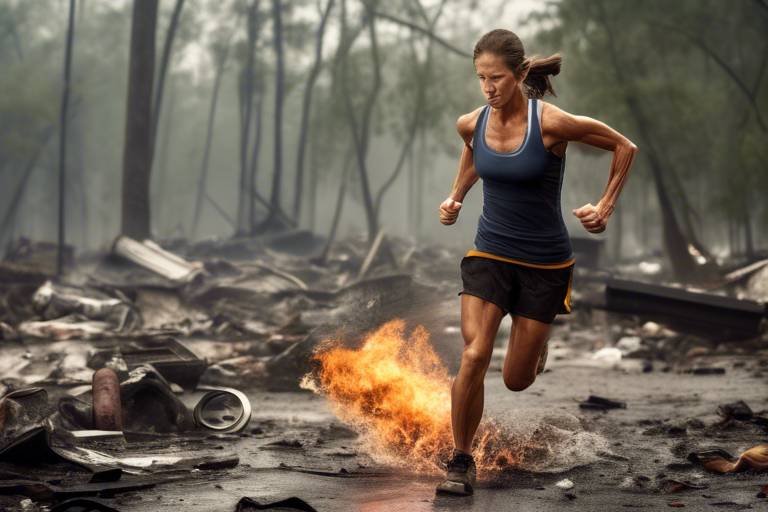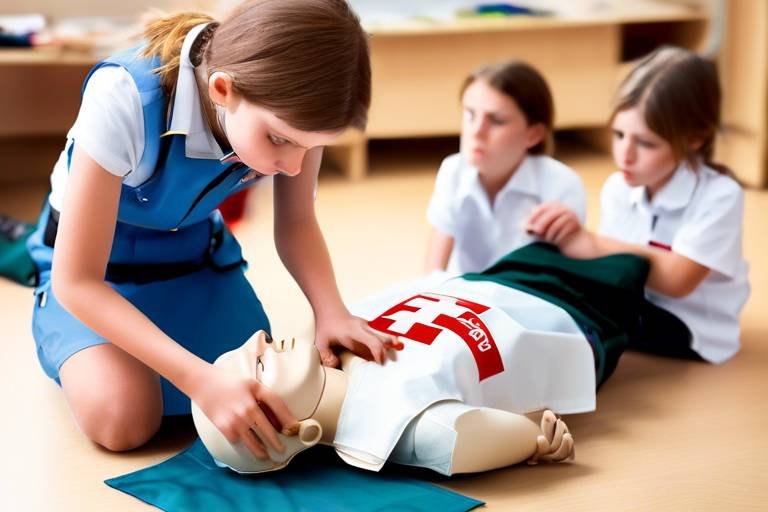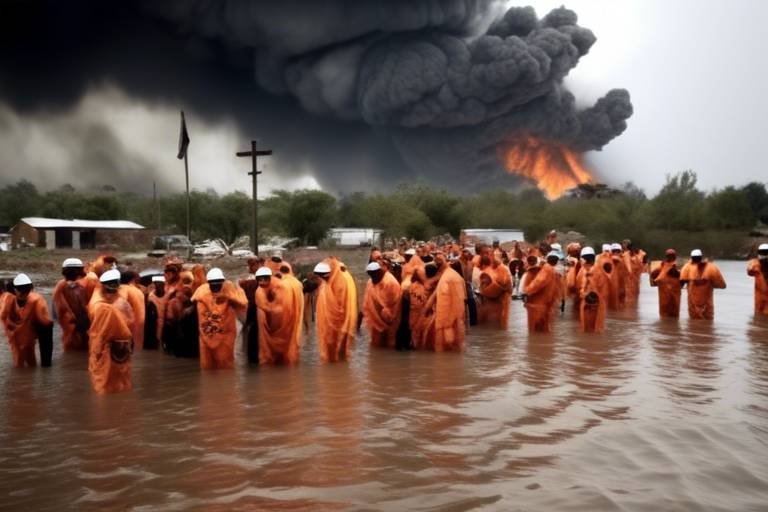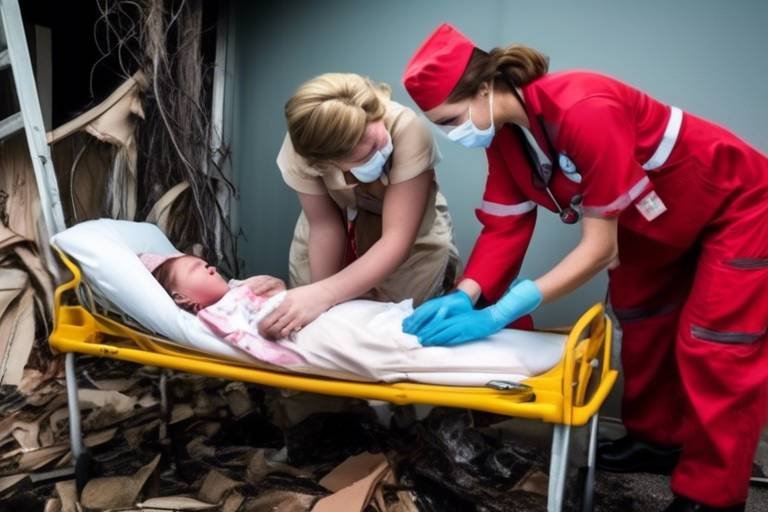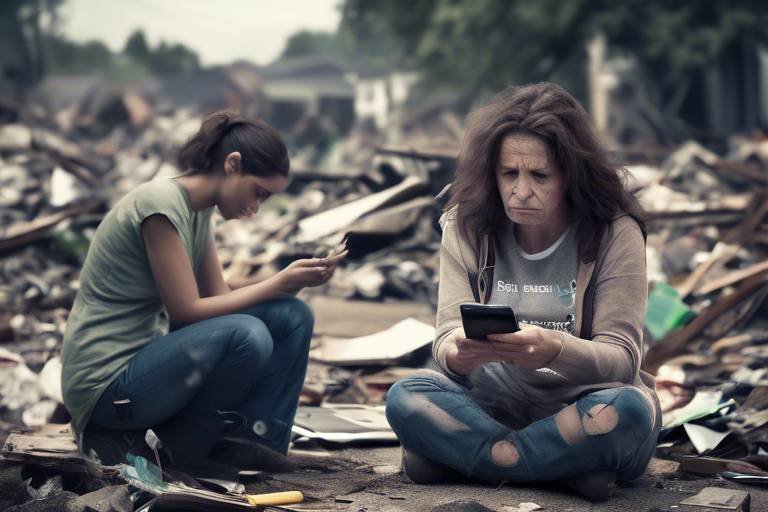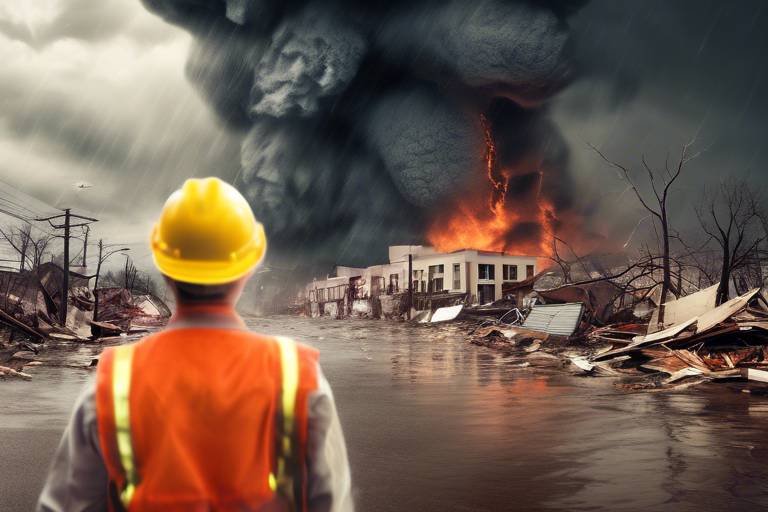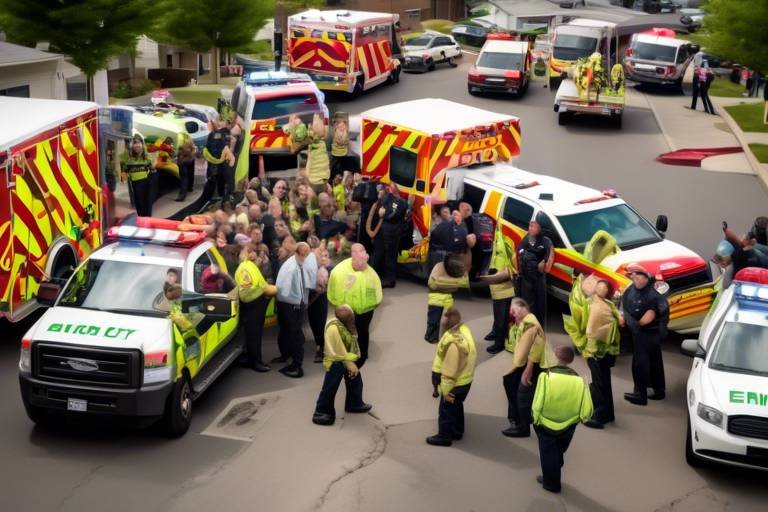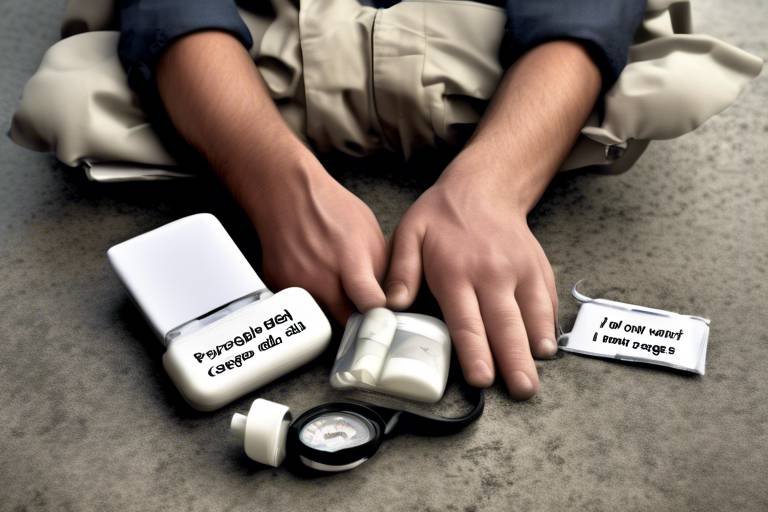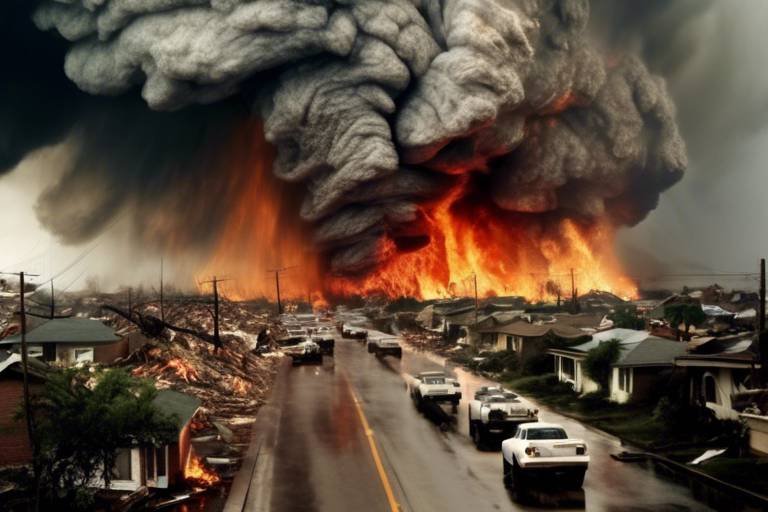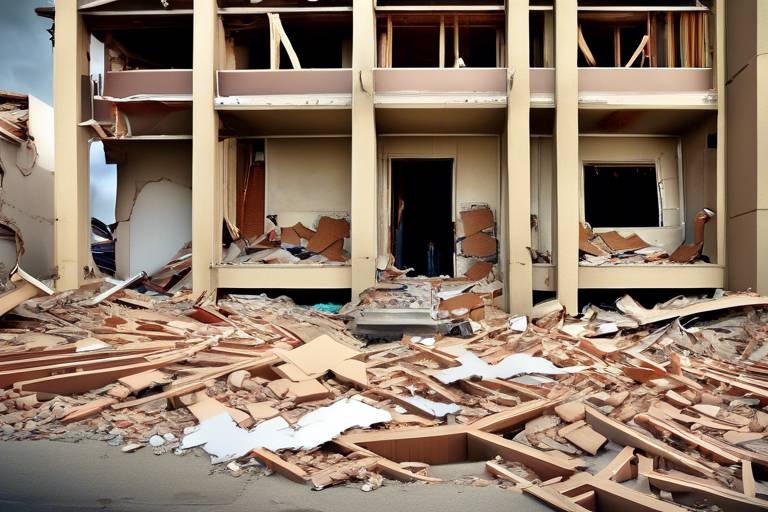Physical Fitness - A Key Element in Disaster Survival
In the face of disasters, whether natural or man-made, the ability to respond swiftly and effectively can mean the difference between life and death. Physical fitness plays a crucial role in enhancing survival chances during these emergencies. Imagine being caught in a flood or an earthquake; your body’s strength, endurance, and agility can significantly affect your ability to escape danger, assist others, or even secure essential resources. This article delves into the various aspects of physical fitness and its importance in disaster preparedness, resilience, and recovery strategies for individuals and communities.
Understanding why physical fitness is essential can serve as a powerful motivator for individuals to adopt healthier lifestyles. It’s not just about looking good; it’s about being ready for whatever life throws at you. When you’re physically fit, you’re not only improving your health but also enhancing your ability to respond effectively in emergency situations. Think of it as a safety net—the stronger it is, the more secure you feel. In times of crisis, those who are physically prepared are often the ones who can help themselves and others, showcasing the profound impact of fitness on community resilience.
Physical fitness isn’t a one-size-fits-all concept. It encompasses various forms that cater to different needs, especially when preparing for disasters. Understanding these types allows individuals to tailor their training effectively. Here are the primary categories:
- Cardiovascular Fitness: Essential for stamina and energy.
- Strength Training: Builds muscle and enhances physical capability.
- Flexibility: Improves overall physical performance and injury prevention.
- Endurance: Ensures prolonged physical activity without fatigue.
By focusing on these areas, you can create a comprehensive fitness strategy that prepares you for the unexpected.
When it comes to disaster survival, cardiovascular fitness is paramount. It helps maintain stamina and energy levels, allowing individuals to escape dangerous situations or perform necessary physical tasks. Imagine sprinting away from a fire or navigating through debris; your heart and lungs need to be in top shape to handle such stress. Aerobic exercises, such as running, cycling, and swimming, are fantastic ways to boost your cardiovascular health.
Aerobic exercises not only enhance heart health but also improve endurance, which is crucial for prolonged physical activity during disasters. They increase your body’s ability to utilize oxygen efficiently, enabling you to exert yourself for longer periods without succumbing to fatigue. Consider this: a well-conditioned heart can pump blood more effectively, meaning more oxygen reaches your muscles when you need it most.
Incorporating a mix of interval training and steady-state cardio can significantly improve your cardiovascular fitness. Interval training involves short bursts of intense activity followed by rest or lower-intensity periods. This method mimics the unpredictable nature of emergencies, preparing your body for sudden demands. Steady-state cardio, on the other hand, builds endurance, which is equally important for long-duration tasks.
Next up is strength training. This aspect of fitness builds muscle and enhances physical capability, making it easier to handle heavy lifting or physically demanding tasks during emergencies. Whether it’s moving debris, lifting supplies, or assisting others, strength training equips you with the necessary power to act decisively. Think of your muscles as the engine of a car; the more powerful they are, the better your vehicle performs under pressure.
Flexibility and mobility are often overlooked but play a significant role in injury prevention and overall physical performance. In disaster scenarios, being able to navigate challenging environments safely is crucial. Regular stretching and mobility exercises can enhance your joint function and stability, allowing you to move efficiently and safely.
Incorporating regular stretching routines can improve flexibility and reduce muscle tension. This preparation is vital for sudden physical exertion in crisis situations. Think of stretching as a warm-up for your body; it gets you ready to face the unexpected without risking injury.
Mobility exercises enhance your ability to move freely and efficiently. They focus on joint health and functional movement patterns, ensuring that you can navigate through obstacles with ease. This agility is particularly beneficial when you need to make quick decisions and movements during emergencies.
Developing a personalized disaster fitness plan is essential for comprehensive preparedness. Start by assessing your current fitness levels to identify strengths and weaknesses. This evaluation will guide you in designing a more effective training program tailored to disaster survival. Setting realistic goals is also crucial; achievable fitness milestones ensure consistent progress and motivation, ultimately enhancing your ability to respond effectively in emergencies.
Proper nutrition and hydration are vital components of physical fitness. They directly impact energy levels and overall performance during disaster situations. A balanced diet provides necessary nutrients, supporting physical performance and recovery, which are crucial during high-stress situations like disasters. Understanding hydration needs and implementing effective strategies can help maintain optimal physical performance and cognitive function during emergencies.
Engaging in community fitness programs fosters collective preparedness, building resilience and strength within neighborhoods to face potential disasters together. Participating in group training sessions promotes camaraderie and motivation, encouraging individuals to commit to their fitness goals while preparing for disaster scenarios.
Group training sessions not only enhance individual fitness but also build a sense of community. When people train together, they inspire each other to push their limits, making the journey toward fitness more enjoyable and effective.
Joining or forming community emergency response teams enhances collective skills and preparedness. These teams equip members with the necessary training to respond effectively during disasters, ensuring that when the time comes, they can act swiftly and decisively.
Q: Why is physical fitness important for disaster survival?
A: Physical fitness enhances your ability to respond quickly and effectively in emergencies, improving your chances of survival.
Q: What types of fitness should I focus on?
A: Focus on cardiovascular fitness, strength training, flexibility, and mobility to prepare comprehensively for disasters.
Q: How can I create a disaster fitness plan?
A: Assess your current fitness levels, set realistic goals, and incorporate diverse exercises tailored to disaster preparedness.
Q: What role does nutrition play in fitness?
A: Proper nutrition fuels your body, supports recovery, and ensures optimal performance during high-stress situations.

The Importance of Physical Fitness
Understanding the significance of physical fitness is not just about looking good or fitting into your favorite jeans; it's about survival. Imagine being in the midst of a disaster—whether it's a natural calamity like an earthquake or a man-made crisis. Your body's ability to respond quickly and effectively can mean the difference between life and death. This realization can be a powerful motivator for individuals to adopt healthier lifestyles. When you're fit, you not only enhance your physical capabilities but also boost your mental resilience, making you more prepared to face unexpected challenges.
Physical fitness affects various aspects of our lives. It improves your cardiovascular health, increases your strength, enhances your flexibility, and boosts your endurance. Each of these elements plays a critical role in how you respond during emergencies. For instance, cardiovascular fitness allows you to maintain your energy levels when fleeing from danger, while strength training equips you with the ability to lift heavy objects or assist others in need.
Moreover, engaging in regular physical activity can help reduce stress and anxiety, which are common reactions during a disaster. When your body is fit, you’re more likely to think clearly and make better decisions under pressure. This mental clarity is essential when every second counts. But it’s not just about individual preparedness; community fitness also plays a vital role. When neighborhoods engage in fitness initiatives together, they build a network of support and resilience, making it easier to respond collectively in times of crisis.
In summary, the importance of physical fitness extends far beyond personal health. It is a fundamental component of disaster preparedness that can greatly enhance both individual and community resilience. By prioritizing your fitness, you not only improve your own chances of survival but also contribute to the strength and readiness of your entire community. So, why wait? Start your fitness journey today and prepare yourself for whatever challenges life throws your way!
- Why is physical fitness important in emergencies? Physical fitness enhances your ability to respond quickly and effectively during emergencies, improving your chances of survival.
- What types of physical fitness should I focus on? Focus on cardiovascular fitness, strength training, flexibility, and endurance to prepare for diverse disaster scenarios.
- How can I motivate myself to stay fit? Set realistic goals, track your progress, and engage in community fitness programs to stay motivated.
- What role does nutrition play in physical fitness? Proper nutrition supports energy levels and recovery, which are crucial during high-stress situations like disasters.

Types of Physical Fitness
When it comes to disaster preparedness, understanding the different types of physical fitness is like having a toolbox filled with essential tools. Each type serves a unique purpose, helping you to build a robust foundation for survival. In the world of fitness, we typically categorize physical fitness into four main types: cardiovascular fitness, strength training, flexibility, and endurance. Each of these components plays a crucial role in ensuring that you are not only fit but also ready to face any unexpected challenges that may arise in times of crisis.
Cardiovascular fitness is the cornerstone of physical preparedness. It's all about how efficiently your heart and lungs work together to supply oxygen to your muscles during physical activity. Imagine trying to escape a flood or navigate through debris; having strong cardiovascular fitness means you can maintain stamina and energy levels, allowing you to escape dangerous situations or perform physically demanding tasks when it matters most. Aerobic exercises like running, swimming, and cycling can significantly enhance your cardiovascular health, ensuring that your body is ready for action.
Next up is strength training, which is essential for building muscle and enhancing your physical capabilities. Think of it this way: if you need to lift a heavy object to clear a path or help someone in distress, having a solid foundation of strength can make all the difference. Strength training not only prepares your body for heavy lifting but also increases resilience against injuries. Incorporating weightlifting, resistance bands, or bodyweight exercises into your routine can help you develop the strength necessary to handle emergencies effectively.
Don’t underestimate the role of flexibility and mobility in your fitness regime. These components are crucial for injury prevention and overall physical performance. Imagine needing to crawl under a fallen tree or reach for something high up during a disaster; being flexible and mobile ensures that your body can navigate through challenging environments without risking injury. Regular stretching routines and mobility exercises can improve your range of motion, reduce muscle tension, and prepare your body for sudden physical exertion.
Finally, we have endurance, which is all about how long you can sustain physical activity. In disaster scenarios, endurance can be the difference between safety and danger. Whether it's walking long distances to find help or carrying supplies, having a high level of endurance allows you to push through fatigue. Training for endurance involves long-duration activities, such as hiking or cycling, which can build the stamina needed to keep going when the going gets tough.
In conclusion, understanding and incorporating these types of physical fitness into your routine can significantly enhance your disaster preparedness. By tailoring your training to include cardiovascular fitness, strength training, flexibility, and endurance, you're not just improving your health; you're equipping yourself with the tools needed to survive and thrive in emergency situations.

Cardiovascular Fitness
When it comes to disaster preparedness, is like the fuel that keeps your engine running. Imagine being in a situation where you need to run for safety or carry someone to safety; your heart and lungs need to be in top shape to handle that kind of stress. Cardiovascular fitness refers to the efficiency with which your body delivers oxygen to your muscles during sustained physical activity. It’s not just about how fast you can run; it’s about building a foundation that allows you to endure, adapt, and overcome in emergency situations.
In a disaster scenario, the ability to maintain stamina and energy levels is crucial. You might find yourself navigating through debris, climbing stairs, or even sprinting away from danger. The heart is a muscle, and just like any other muscle in your body, it requires regular training to perform optimally. This is where aerobic exercises come into play. Activities like running, cycling, and swimming not only boost your cardiovascular health but also enhance your endurance, ensuring that when the going gets tough, you can keep going.
To truly harness the benefits of cardiovascular fitness, it’s essential to incorporate a mix of training routines. For instance, interval training—which alternates between short bursts of intense activity and periods of rest—can significantly improve your cardiovascular capacity. On the other hand, steady-state cardio, where you maintain a consistent pace over a longer duration, builds endurance. Both methods are effective, but together they create a comprehensive training approach that prepares your body for the unpredictable nature of disasters.
Let’s break it down further. Here’s a quick comparison of the two training methods:
| Training Method | Benefits |
|---|---|
| Interval Training | Improves cardiovascular capacity quickly, burns more calories in less time. |
| Steady-State Cardio | Builds endurance, easier to sustain for longer periods. |
By integrating both types of training into your routine, you can prepare your body for the demands of any disaster situation. Remember, the goal is to be able to respond effectively when it matters most. So, whether you’re sprinting to safety or lifting heavy objects to clear a path, your cardiovascular fitness will play a pivotal role in your overall survival strategy.
Lastly, let’s not forget about recovery. After intense cardiovascular workouts, it's essential to allow your body to recuperate. This means getting adequate rest, staying hydrated, and nourishing your body with the right foods. The stronger your cardiovascular system, the better equipped you’ll be to handle any emergency that comes your way.
- How often should I train for cardiovascular fitness? Aim for at least 150 minutes of moderate aerobic activity or 75 minutes of vigorous activity each week.
- Can I improve my cardiovascular fitness at home? Absolutely! Activities like jumping rope, dancing, or even high-intensity interval training (HIIT) can be done at home.
- What are some signs of good cardiovascular fitness? Indicators include a lower resting heart rate, the ability to exercise for longer periods without fatigue, and quicker recovery times after exercise.
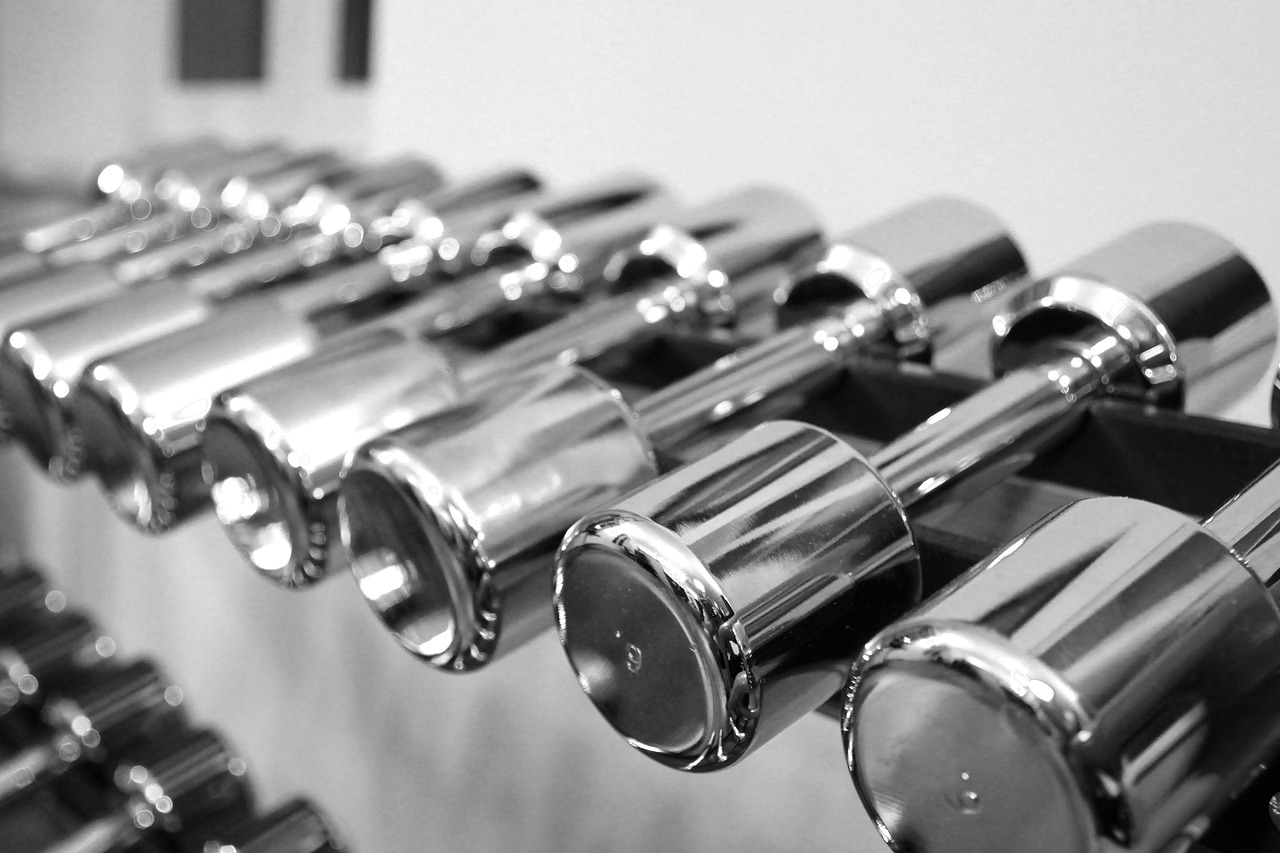
Benefits of Aerobic Exercises
Aerobic exercises, often referred to as cardio, are more than just a way to break a sweat; they are a lifeline during emergencies. Imagine being in a situation where you need to escape a disaster, whether it's a natural calamity or an unforeseen accident. Your heart races, your muscles ache, and your mind is racing with thoughts of survival. This is where the benefits of aerobic exercises come into play, enhancing your ability to respond effectively in high-stress situations.
One of the primary advantages of aerobic exercise is its ability to improve cardiovascular health. Regularly engaging in activities like running, swimming, or cycling strengthens the heart, allowing it to pump blood more efficiently. This means that during an emergency, your body can deliver oxygen to your muscles and brain more effectively, keeping you alert and energized. It's like upgrading your body's engine to run more smoothly, ensuring you have the stamina to face whatever challenges come your way.
Moreover, aerobic exercises significantly enhance endurance. Think of it as building a reserve tank of energy. When you're physically fit, you can sustain prolonged activity without succumbing to fatigue. This is crucial during disasters when you may need to run, climb, or carry heavy objects for extended periods. The difference between someone who exercises regularly and someone who doesn't can be monumental in these situations. You might find yourself able to navigate through debris, assist others, or even evacuate quickly, all thanks to your enhanced endurance.
Another remarkable benefit of aerobic exercises is their impact on mental clarity. Engaging in cardio workouts not only boosts physical health but also releases endorphins—those feel-good hormones that elevate your mood and reduce stress. In a disaster scenario, maintaining a clear mind is vital. Panic can cloud judgment, but a well-conditioned body can keep your mind sharp and focused, allowing for better decision-making under pressure.
Additionally, aerobic exercises can aid in weight management. Keeping your body in peak condition means you're less likely to be hindered by excess weight during a crisis. This can be particularly important when you need to move swiftly or navigate through challenging terrains. The lighter you are, the easier it is to maneuver, and that can be the difference between safety and danger.
To sum it up, the benefits of aerobic exercises extend far beyond just physical appearance. They are a crucial component of disaster preparedness, enhancing your cardiovascular health, endurance, mental clarity, and overall physical capability. So, whether you prefer jogging in the park, cycling through the city, or swimming laps at the local pool, remember that every drop of sweat is a step toward ensuring your survival in times of crisis. Embrace aerobic exercises as a fundamental part of your fitness routine, and you'll not only improve your health but also your resilience in the face of adversity.
- What are some examples of aerobic exercises? Examples include running, cycling, swimming, dancing, and brisk walking.
- How often should I engage in aerobic exercises? Aim for at least 150 minutes of moderate aerobic activity or 75 minutes of vigorous activity each week.
- Can aerobic exercises help with stress management? Yes, aerobic exercises release endorphins, which can help reduce stress and improve mood.
- Is it necessary to have special equipment for aerobic exercises? Not necessarily; many aerobic exercises can be done with little to no equipment, such as walking or jogging.
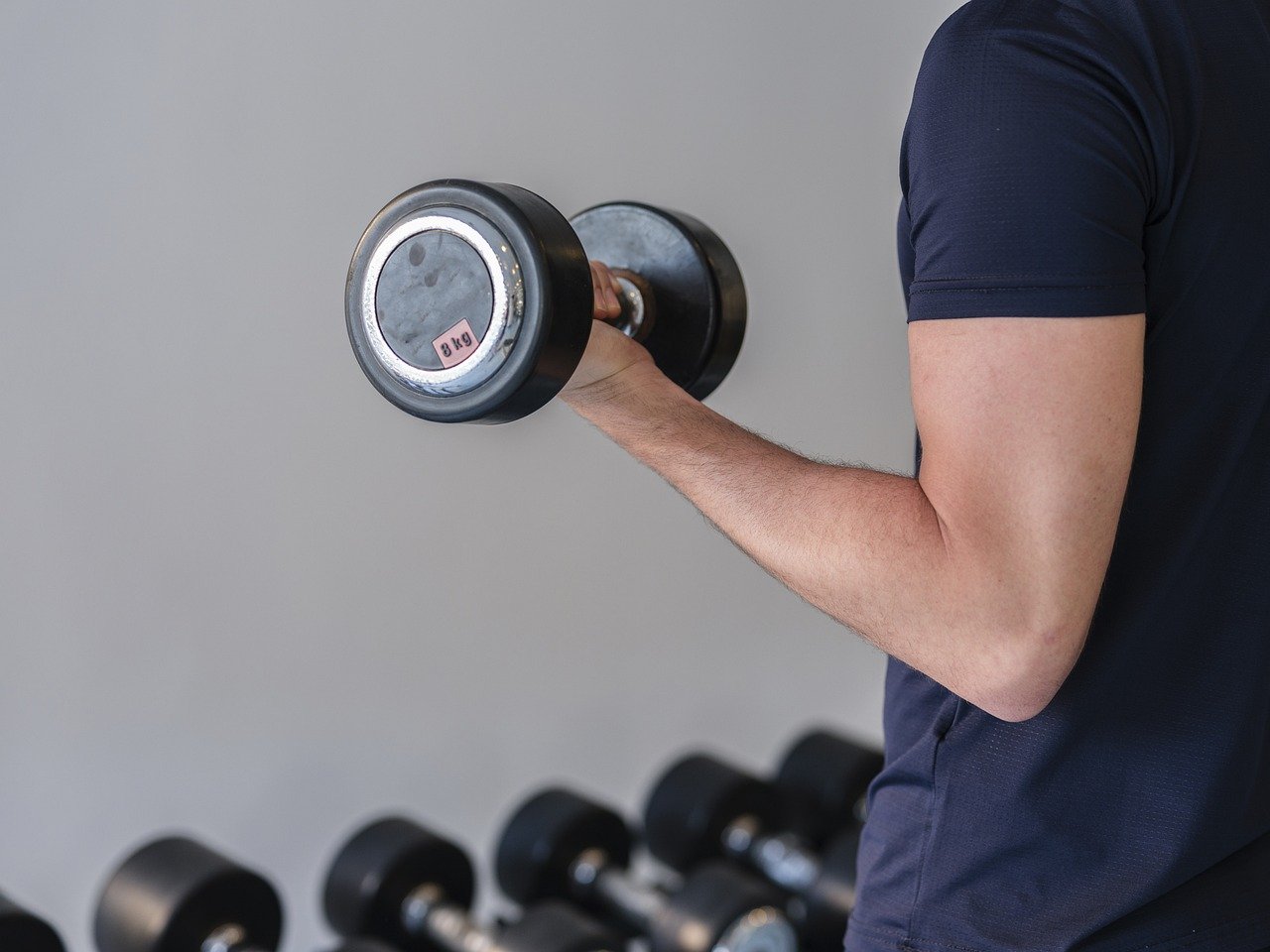
Effective Cardiovascular Training Routines
When it comes to enhancing your cardiovascular fitness, the right training routine can make all the difference. Whether you're preparing for a potential disaster or just looking to improve your overall health, incorporating a variety of cardiovascular exercises into your regimen is essential. Think of your body as a finely tuned machine; it needs the right fuel and maintenance to perform at its best, especially in high-stress situations. So, how do you create an effective cardiovascular training routine? Let’s break it down.
One of the most effective methods to boost your cardiovascular fitness is through interval training. This involves alternating periods of intense activity with periods of lower intensity or rest. For example, you might sprint for 30 seconds and then walk for a minute. This type of training not only improves your stamina but also increases your metabolic rate, which means you’ll burn more calories even after your workout is over. It’s like lighting a fire under your fitness goals!
Another important aspect to consider is steady-state cardio. This involves maintaining a consistent level of effort over a longer duration, such as jogging at a moderate pace for 30 minutes. It’s a great way to build endurance and is particularly beneficial for those who are just starting their fitness journey. Combining both interval and steady-state training in your routine can lead to well-rounded cardiovascular health.
Here’s a simple table to help you visualize a week’s worth of effective cardiovascular training routines:
| Day | Workout Type | Duration |
|---|---|---|
| Monday | Interval Training | 30 minutes |
| Tuesday | Steady-State Cardio | 45 minutes |
| Wednesday | Rest or Light Activity | - |
| Thursday | Interval Training | 30 minutes |
| Friday | Steady-State Cardio | 45 minutes |
| Saturday | Active Recovery (Yoga, Walking) | 30 minutes |
| Sunday | Long Steady-State Cardio | 60 minutes |
In addition to these methods, it's crucial to listen to your body. If you’re feeling fatigued or sore, don’t hesitate to take a break or switch up your routine. The goal is to build resilience and endurance without risking injury. Remember, consistency is key, and finding a routine that you enjoy will keep you motivated. So, whether you prefer running, cycling, or swimming, make it a point to incorporate cardiovascular exercises that excite you.
Finally, don't forget to warm up before your workouts and cool down afterward. This helps to prepare your body for the demands of exercise and aids in recovery, ensuring that you’re ready to tackle whatever challenges come your way—be it a disaster scenario or just a busy day at work. So lace up those sneakers and get ready to boost your cardiovascular fitness!
- How often should I do cardiovascular training?
For optimal results, aim for at least 150 minutes of moderate aerobic activity or 75 minutes of vigorous activity each week. - Can I do cardio every day?
Yes, but it's important to mix up your routines and allow for rest days to prevent overtraining. - What if I'm new to exercise?
Start slow! Begin with shorter sessions and gradually increase intensity and duration as your fitness improves.
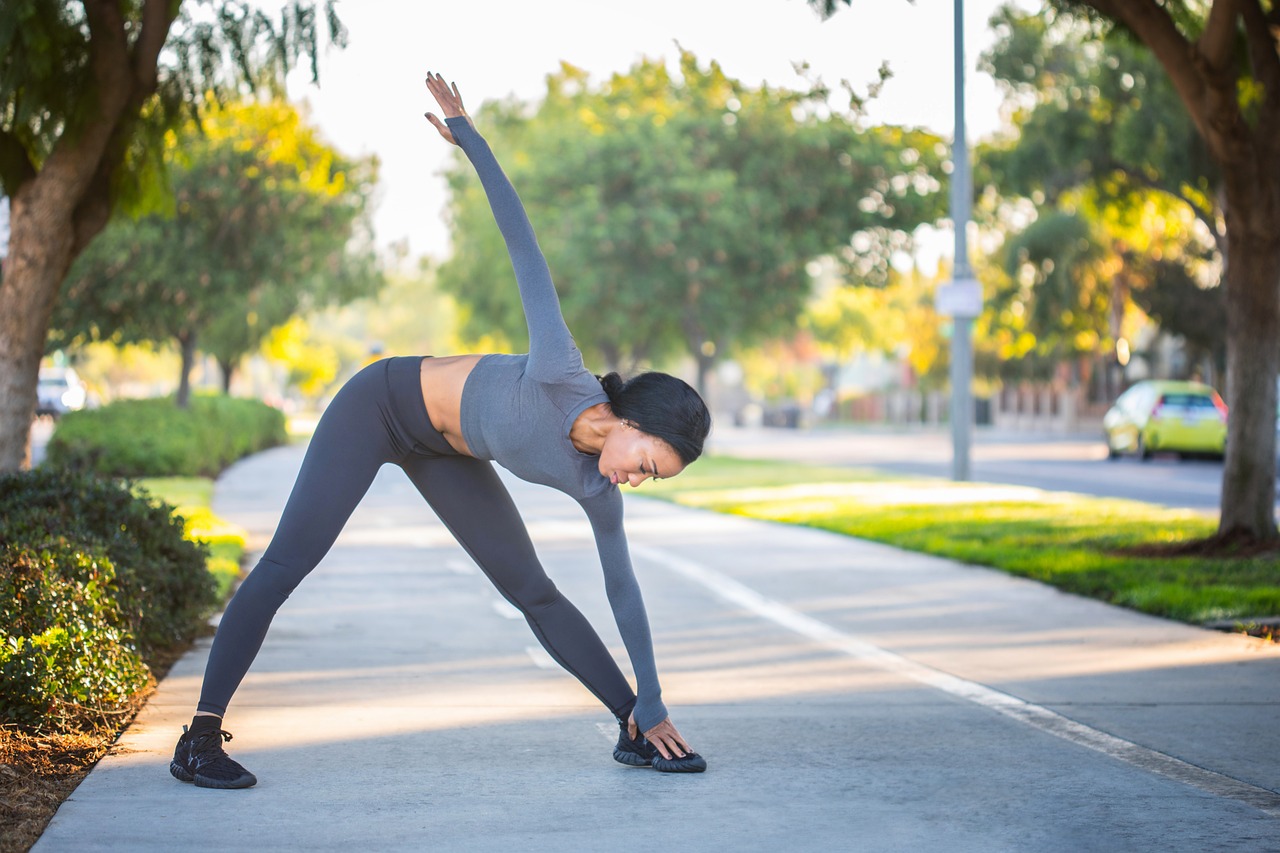
Strength Training
is more than just lifting weights; it's about building a foundation of physical capability that can significantly enhance your ability to respond in emergency situations. Imagine being in a disaster scenario where you need to lift heavy debris to rescue someone or carry your emergency supplies to safety. Without adequate strength, these tasks can become overwhelming, if not impossible. By incorporating strength training into your fitness routine, you not only improve your muscle mass but also boost your overall resilience and functional fitness.
One of the most appealing aspects of strength training is its versatility. You can engage in various forms of resistance exercises, whether using free weights, resistance bands, or even your body weight. This variety keeps workouts exciting and allows you to target different muscle groups effectively. For instance, exercises like squats, deadlifts, and push-ups can help develop the major muscle groups essential for lifting and carrying during a disaster. Furthermore, strength training can enhance your bone density, reducing the risk of injury during physically demanding situations.
To illustrate the benefits of strength training, consider the following table that outlines the key advantages:
| Benefit | Description |
|---|---|
| Increased Muscle Mass | Helps in performing physically demanding tasks more efficiently. |
| Enhanced Bone Density | Reduces the risk of fractures and injuries during emergencies. |
| Improved Metabolism | Supports weight management and energy levels during stressful situations. |
| Boosted Mental Resilience | Strength training can enhance your psychological preparedness and confidence. |
Moreover, it's essential to create a balanced strength training program that includes exercises targeting all major muscle groups. This approach not only builds overall strength but also ensures that you are prepared for a variety of physical challenges that may arise during a disaster. A well-rounded program might include:
- Upper Body Exercises: Such as bench presses and rows.
- Lower Body Exercises: Like squats and lunges.
- Core Strengthening: Incorporating planks and rotational exercises.
In addition to improving your physical capabilities, strength training can also have profound effects on your mental state. Regular resistance training has been shown to reduce symptoms of anxiety and depression, which can be particularly beneficial in the aftermath of a disaster. Feeling physically strong can translate into feeling mentally strong, giving you the confidence to face challenges head-on.
In conclusion, integrating strength training into your fitness regimen is a vital step toward enhancing your disaster preparedness. Not only does it equip you with the physical strength needed to handle emergency situations, but it also fortifies your mental resilience. So, why wait? Start lifting today and prepare yourself for whatever challenges may come your way!

Flexibility and Mobility
When it comes to disaster preparedness, flexibility and mobility are often overlooked yet play a critical role in ensuring that you can react swiftly and effectively in emergencies. Imagine navigating through debris after a natural disaster or needing to escape a dangerous situation quickly; being flexible and mobile can make all the difference. These attributes not only help in injury prevention but also enhance overall physical performance, allowing individuals to maneuver through challenging environments with ease.
Flexibility refers to the range of motion in your joints and muscles, while mobility encompasses the ability to move freely and easily. Having a good balance of both means that you can adapt to sudden changes in your environment, whether that involves climbing over obstacles or sprinting to safety. Think of your body as a well-oiled machine; if one part is stiff or unresponsive, the entire system can falter. Regularly incorporating flexibility and mobility exercises into your training can significantly improve your physical capabilities, making you better equipped to handle unforeseen situations.
One effective way to enhance flexibility is through stretching techniques. Stretching not only improves your range of motion but also reduces muscle tension, which can be incredibly beneficial when you need to spring into action. For example, a simple routine involving dynamic stretches before a workout can prepare your body for rigorous activity, while static stretches afterward can aid in recovery. Here are a few stretching techniques you might consider:
- Dynamic Stretching: Engaging in movements that mimic the activity you’re about to perform.
- Static Stretching: Holding a stretch for a period to improve flexibility.
- Proprioceptive Neuromuscular Facilitation (PNF): A more advanced technique involving both stretching and contracting of the muscle group.
In addition to stretching, mobility exercises are crucial for enhancing joint function and stability. These exercises help improve the movement patterns of your body, ensuring that you can navigate unpredictable environments smoothly. Mobility training often includes movements that engage multiple joints and muscle groups, such as squats, lunges, and hip circles. By practicing these exercises regularly, you can develop a greater sense of control over your body, which is vital in high-stress situations.
Ultimately, integrating flexibility and mobility into your fitness regimen is not just about improving your athletic performance; it's about preparing your body for the unexpected challenges that come with disasters. Whether it's a sudden need to lift a heavy object, sprint away from danger, or climb over obstacles, being flexible and mobile can significantly enhance your chances of survival. So, why not start incorporating these crucial elements into your training today? Your future self will thank you!
Q: How often should I incorporate flexibility and mobility exercises into my routine?
A: It's generally recommended to include flexibility and mobility exercises at least 2-3 times a week, but daily practice can provide even greater benefits.
Q: Can flexibility and mobility training help prevent injuries?
A: Yes, improving flexibility and mobility can significantly reduce the risk of injuries by enhancing your body’s ability to adapt to sudden movements and strains.
Q: What are some good mobility exercises for beginners?
A: Beginners can start with simple movements like arm circles, leg swings, and gentle lunges to improve their mobility gradually.

Stretching Techniques
Stretching is not just a warm-up; it's an essential component of any fitness routine, especially when preparing for the unpredictable nature of disasters. Think of your muscles as elastic bands. If you keep them tight and rigid, they can snap under pressure. However, by incorporating effective stretching techniques, you can maintain flexibility and prevent injuries, which is crucial when you need to move quickly or navigate challenging environments during emergencies.
One of the most effective stretching techniques is the dynamic stretch. This involves moving parts of your body through their full range of motion in a controlled manner. For instance, leg swings and arm circles can help warm up your muscles while enhancing your flexibility. Dynamic stretching is particularly beneficial before engaging in physical activities, as it prepares your body for the demands of sudden exertion.
On the other hand, static stretching is best performed after your workout or during cool-down periods. This technique involves holding a stretch for a prolonged period, usually between 15 to 60 seconds. It helps to lengthen the muscles and improve overall flexibility. For example, after a run, you might want to sit and reach for your toes to stretch your hamstrings or perform a quadriceps stretch by pulling your heel to your buttocks.
Incorporating a variety of stretching techniques into your routine can enhance your physical performance. Here are a few recommended stretches to consider:
- Hamstring Stretch: Sit on the ground with one leg extended and the other bent. Reach toward your toes on the extended leg to stretch your hamstring.
- Shoulder Stretch: Bring one arm across your body and use the opposite arm to pull it closer, stretching the shoulder.
- Hip Flexor Stretch: Kneel on one knee with the other foot in front, bent at 90 degrees. Push your hips forward to stretch the hip flexors.
It's essential to listen to your body while stretching. If you feel pain, ease off the stretch. The goal is to feel a gentle pull, not discomfort. Regular stretching can significantly enhance your mobility, allowing you to react swiftly in crisis situations. By making stretching a habit, you not only improve your physical fitness but also equip yourself with the resilience needed to face disasters head-on.
In summary, integrating stretching techniques into your fitness regimen is vital for injury prevention and enhancing your overall performance. Just like a well-oiled machine runs smoothly, a flexible body can navigate the unpredictable paths of life with ease. So, stretch it out and prepare yourself for whatever challenges may come your way!
Q1: How often should I stretch?
A1: Aim to stretch at least 2-3 times a week, or more frequently if you are engaging in regular physical activity.
Q2: Is it better to stretch before or after a workout?
A2: Dynamic stretching is best before a workout to warm up the muscles, while static stretching is more beneficial after exercising for recovery.
Q3: Can stretching help prevent injuries?
A3: Yes, regular stretching can improve flexibility and reduce the risk of injuries by preparing your muscles for physical activities.
Q4: What are some good stretches for beginners?
A4: Beginners can start with simple stretches like the hamstring stretch, shoulder stretch, and quadriceps stretch to ease into a stretching routine.
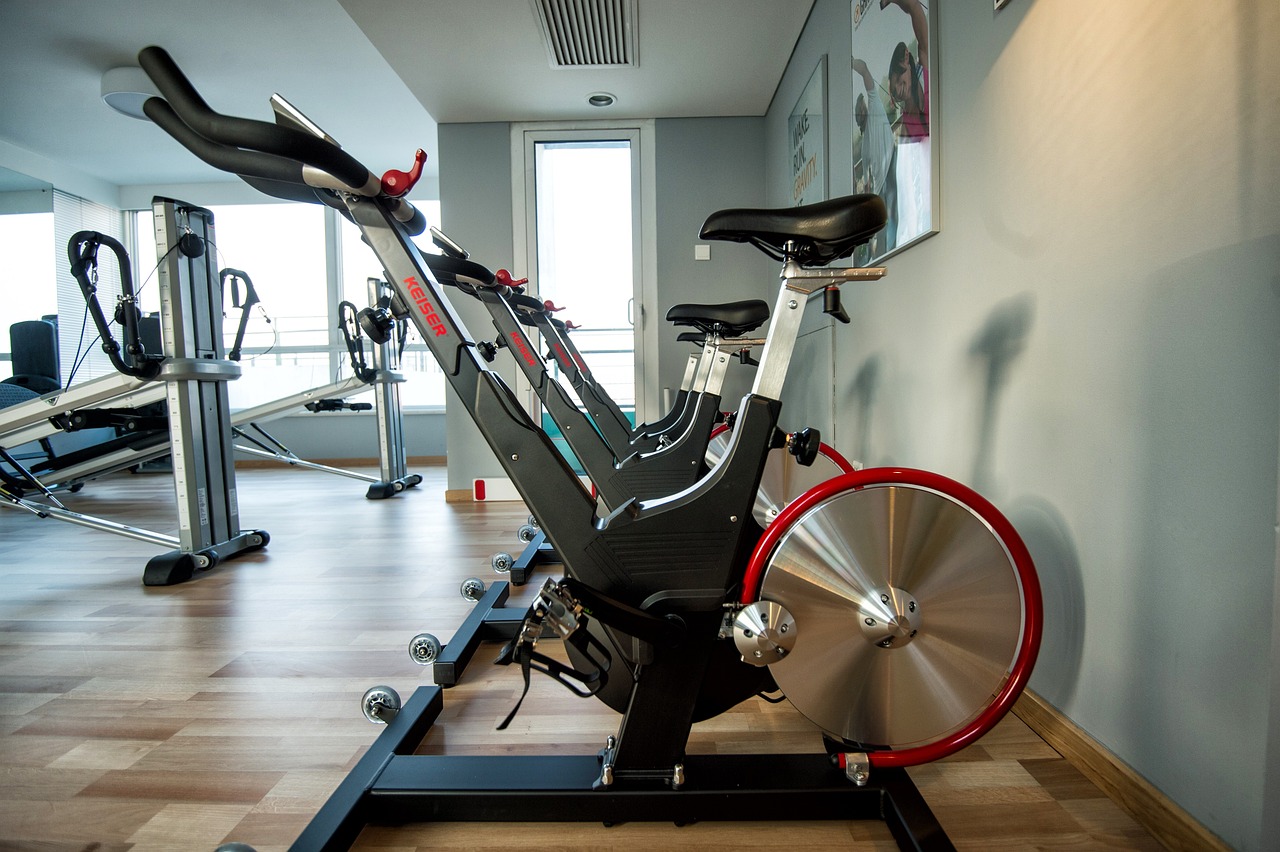
Mobility Exercises
Mobility exercises are a cornerstone of physical fitness, especially when it comes to disaster preparedness. These exercises focus on enhancing the range of motion in your joints and improving overall movement efficiency. Imagine being in a chaotic situation where every second counts; the ability to move freely and swiftly can make all the difference between safety and danger. Just like a well-oiled machine, your body needs to function smoothly to navigate through obstacles and avoid injuries.
Incorporating mobility exercises into your routine not only prepares your body for unexpected challenges but also helps to prevent injuries that could hinder your ability to respond during an emergency. Think of mobility as the oil that keeps the gears of your body running smoothly. When you have good mobility, you can bend, twist, and reach without the fear of pulling a muscle or straining a joint.
Some effective mobility exercises include:
- Hip Circles: Stand on one leg and move the other leg in a circular motion to loosen up your hips.
- Thoracic Rotations: Sit or stand tall and rotate your upper body from side to side, which helps improve spinal mobility.
- Ankle Rolls: Lift one foot off the ground and roll your ankle in circles to enhance ankle mobility.
These exercises can be performed anywhere and require no special equipment, making them perfect for anyone looking to enhance their physical preparedness. Aim to incorporate mobility exercises into your warm-up routine or dedicate specific sessions to them throughout the week. Just a few minutes a day can lead to significant improvements in your movement capabilities.
Furthermore, if you’re part of a community fitness initiative, consider organizing group mobility sessions. Not only will this foster a sense of camaraderie, but it also allows everyone to learn from one another, share tips, and motivate each other. The more people are involved, the more likely they are to stick with the program, ensuring that your community is well-prepared when disaster strikes.
In summary, mobility exercises are not just beneficial; they are essential for anyone serious about enhancing their physical fitness for disaster preparedness. By dedicating time to improve your mobility, you’re investing in your ability to respond effectively in emergencies, making you a valuable asset to yourself and your community.
Q: How often should I perform mobility exercises?
A: It’s recommended to incorporate mobility exercises into your routine at least 3-4 times a week. Consistency is key to seeing improvements.
Q: Can mobility exercises help with everyday activities?
A: Absolutely! Improved mobility can enhance your performance in daily tasks, making movements like bending, lifting, and reaching easier and safer.
Q: Do I need any special equipment for mobility exercises?
A: No special equipment is needed for most mobility exercises. They can be performed using just your body weight, making them accessible to everyone.
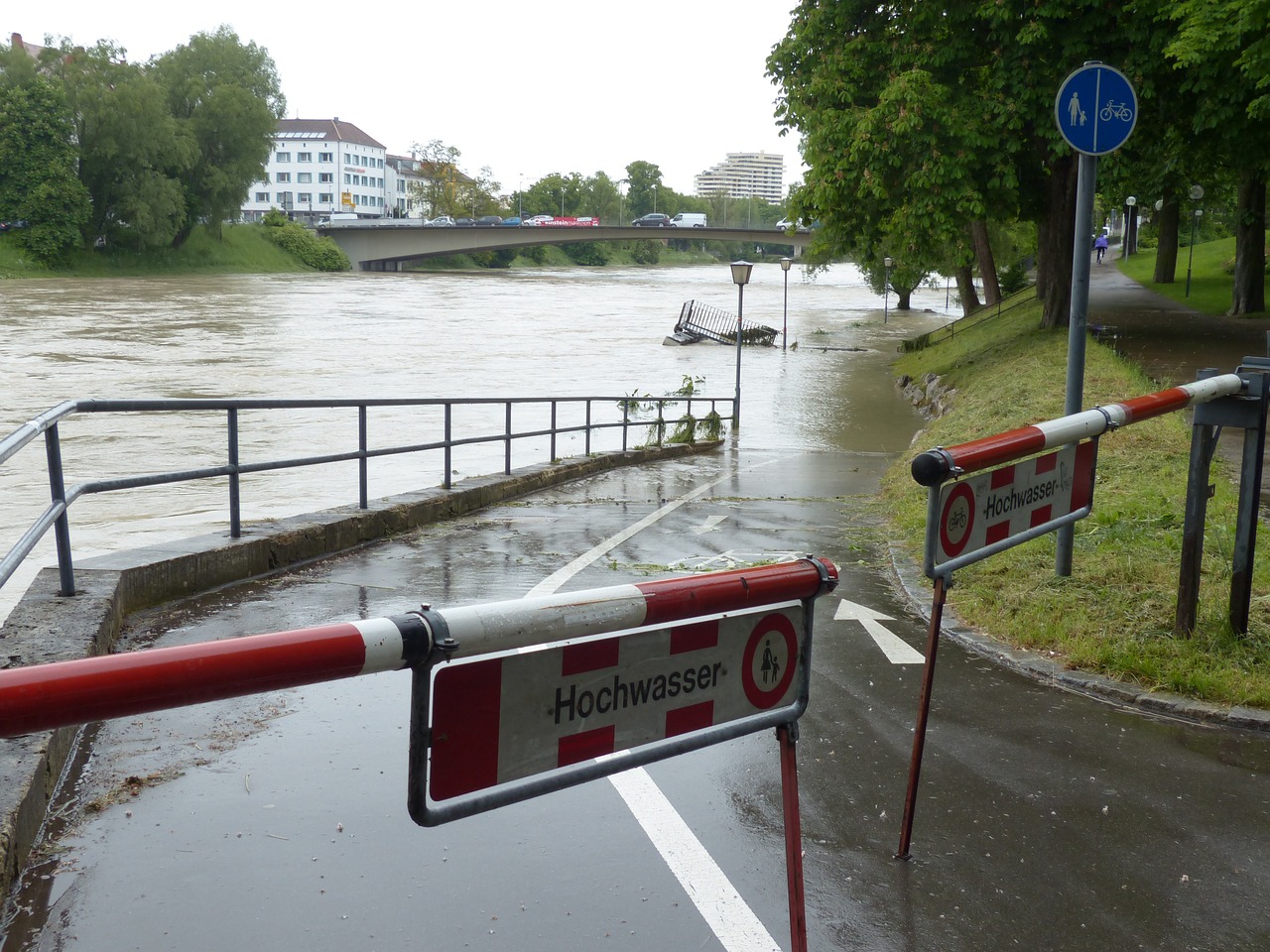
Creating a Disaster Fitness Plan
Creating a disaster fitness plan is not just about hitting the gym; it's about tailoring your physical preparedness to face the unexpected. Think of it as crafting a personalized roadmap that guides you through the twists and turns of emergency situations. To start, it’s crucial to assess your current fitness levels. This involves evaluating your strengths and weaknesses, which can be done through self-assessment or by consulting a fitness professional. Knowing where you stand will help you design a more effective training program that aligns with your disaster survival goals.
Once you have a clear picture of your fitness levels, the next step is to set realistic goals. These goals should be specific, measurable, achievable, relevant, and time-bound (SMART). For example, instead of saying, "I want to get fit," you might say, "I want to run 2 miles in under 20 minutes within the next three months." This kind of clarity not only boosts your motivation but also keeps you on track as you work towards enhancing your physical capabilities.
Incorporating a variety of exercises into your fitness plan is essential. This diversity ensures that you are preparing your body for the multifaceted challenges that disasters can present. Your plan should ideally include:
- Cardiovascular Training: Activities like running, cycling, or swimming to build endurance.
- Strength Training: Exercises such as weight lifting or bodyweight workouts to enhance muscle power.
- Flexibility and Mobility Work: Stretching and mobility exercises to prevent injuries and improve overall performance.
Another key component of your disaster fitness plan is consistency. It’s not about how hard you train in one session but rather how regularly you engage in physical activity. Establishing a routine can help make fitness a habit. For instance, scheduling your workouts at the same time each day can create a sense of normalcy and commitment.
Finally, don’t forget to incorporate recovery strategies into your plan. Recovery is just as important as the workouts themselves, as it allows your body to heal and adapt to the stresses of training. This can include adequate sleep, proper nutrition, and even mindfulness practices to help manage stress levels.
In summary, creating a disaster fitness plan involves a comprehensive approach that includes assessing your fitness levels, setting achievable goals, incorporating diverse exercises, maintaining consistency, and allowing for recovery. By taking these steps, you’ll not only enhance your physical fitness but also boost your confidence in facing any disaster that may come your way.
Q1: How often should I update my disaster fitness plan?
A1: It's a good practice to review and update your plan every three to six months, or whenever you reach a significant fitness goal.
Q2: Can I create a disaster fitness plan at home?
A2: Absolutely! Many effective exercises can be done at home with little to no equipment. Just be sure to include a mix of cardiovascular, strength, and flexibility exercises.
Q3: What if I have a pre-existing health condition?
A3: If you have any health concerns, it’s advisable to consult a healthcare provider before starting any new fitness regimen to ensure it’s safe for you.
Q4: How do I stay motivated to stick to my plan?
A4: Setting small, achievable goals and tracking your progress can help maintain motivation. Additionally, consider finding a workout buddy or joining a community group for added support.

Assessing Current Fitness Levels
Before diving into a fitness regimen tailored for disaster preparedness, it's crucial to assess your current fitness levels. This step is akin to taking stock of your supplies before a storm; you need to know what you have on hand to prepare effectively. Start by evaluating your overall health and fitness through various methods, such as self-assessments, fitness tests, or even consulting a fitness professional. This evaluation will not only highlight your strengths but also reveal areas that need improvement.
One effective way to gauge your fitness level is through a combination of cardiovascular endurance tests, strength assessments, and flexibility evaluations. For example, you might consider performing a timed run or walk to measure your cardiovascular fitness. Similarly, strength can be assessed through exercises like push-ups or squats, while flexibility can be evaluated using stretches targeting major muscle groups. Here’s a simple table to illustrate some of these assessments:
| Fitness Component | Assessment Method |
|---|---|
| Cardiovascular Endurance | Timed 1-mile run or walk |
| Muscular Strength | Maximum repetitions of push-ups or squats |
| Flexibility | Sit-and-reach test |
Furthermore, don't forget to consider your mental fitness as well. Disasters often require quick thinking and problem-solving abilities. Engaging in activities that challenge your cognitive skills can be just as important as physical training. You might ask yourself questions like, "How do I handle stress?" or "Am I able to think clearly in high-pressure situations?" These reflections will help you better prepare for the unexpected.
Once you've gathered this information, take a moment to reflect on your findings. Are there specific areas where you excel? Are there weaknesses that could hinder your ability to respond in an emergency? This self-awareness is vital, as it lays the groundwork for setting realistic fitness goals tailored to your disaster preparedness needs. Remember, the journey to becoming disaster-ready is not just about physical strength; it’s about building a comprehensive strategy that encompasses all aspects of fitness.
In summary, assessing your current fitness levels is a fundamental step in preparing for disasters. By understanding where you stand today, you can create a more effective and personalized fitness plan that will enhance your resilience and readiness for whatever challenges may come your way.
- What is the best way to assess my fitness level? You can perform a series of fitness tests such as a timed run, strength exercises, and flexibility stretches to gauge your overall fitness.
- How often should I reassess my fitness levels? It's advisable to reassess your fitness levels every few months or after completing a significant training program to track progress.
- Can mental fitness be measured? While it's more subjective, you can assess mental fitness through self-reflection and by evaluating how you manage stress and make decisions under pressure.
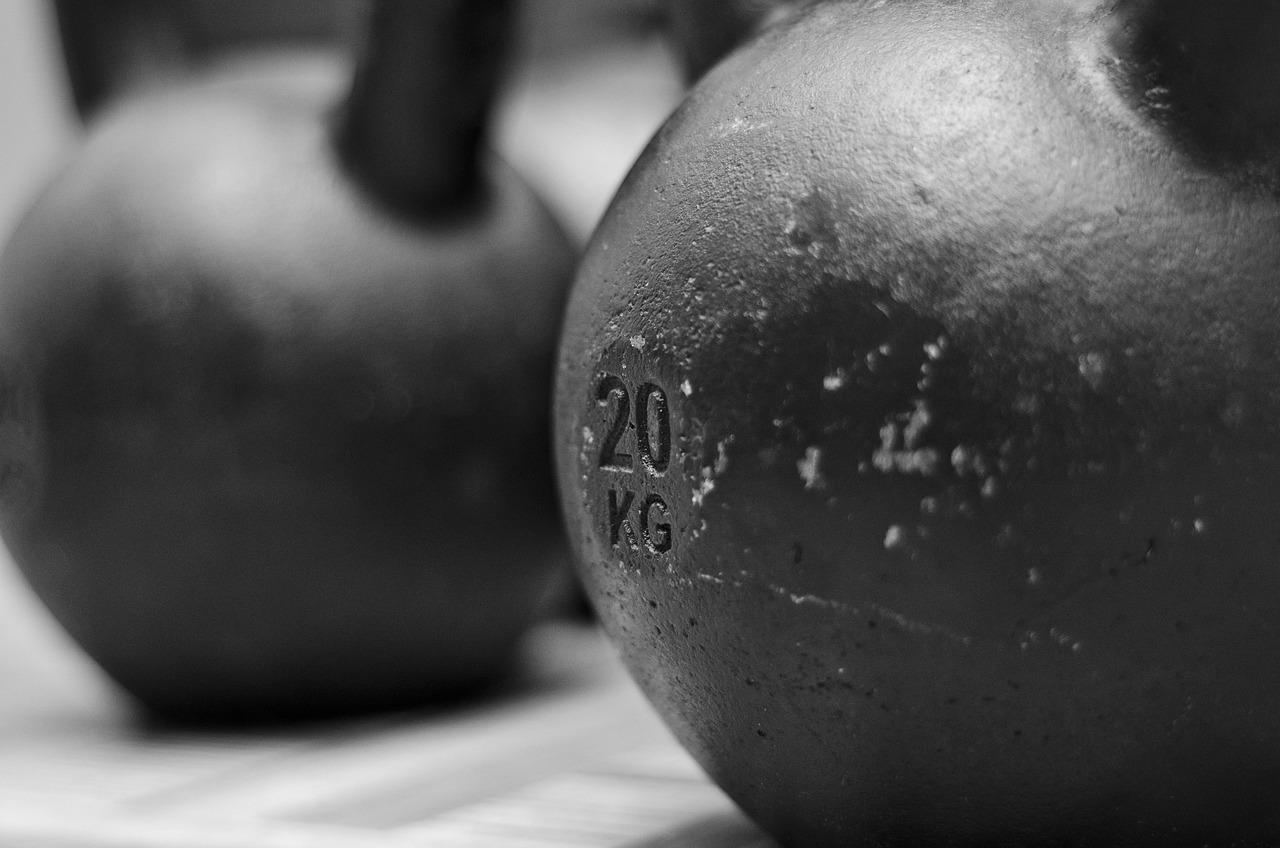
Setting Realistic Goals
When it comes to disaster preparedness, is not just a good idea; it’s essential. Think of it like mapping out a journey. Without a clear destination, you might find yourself wandering aimlessly, which can lead to frustration and burnout. By establishing achievable fitness goals, you create a roadmap that keeps you motivated and on track. Whether you're a fitness novice or a seasoned athlete, the key is to make your goals specific, measurable, attainable, relevant, and time-bound (SMART).
To start, consider what you want to achieve. Are you looking to improve your cardiovascular endurance for those long hikes to safety? Or perhaps you want to build strength to help lift heavy objects during emergencies? Identifying your primary focus will allow you to tailor your goals accordingly. For example, if your aim is to enhance your cardiovascular fitness, a realistic goal could be to run a 5K in three months. This goal is specific and measurable, giving you a clear target to work toward.
Next, it’s crucial to break down these larger goals into smaller, manageable steps. This approach not only makes the process less daunting but also provides you with a series of mini-victories to celebrate along the way. For instance, if your goal is to run that 5K, you might set weekly targets like running for 10 minutes without stopping, gradually increasing your time each week. This step-by-step method helps build your confidence and keeps you motivated.
Moreover, don’t forget to regularly assess your progress. This evaluation allows you to adjust your goals if necessary. Life is unpredictable, and sometimes, despite our best intentions, we may not achieve what we set out to do. That’s perfectly okay! The important thing is to be flexible and willing to adapt your goals based on your current fitness level and circumstances.
Lastly, remember that your goals should also align with your overall lifestyle and commitments. If you have a busy schedule, setting a goal to work out five days a week might not be feasible. Instead, aim for three days a week, focusing on quality over quantity. This way, you’re more likely to stick with your plan and make consistent progress.
Here’s a quick summary of how to set realistic fitness goals for disaster preparedness:
| Step | Description |
|---|---|
| Identify Your Focus | Determine whether you want to improve strength, endurance, flexibility, or overall fitness. |
| Set SMART Goals | Make your goals Specific, Measurable, Attainable, Relevant, and Time-bound. |
| Break Down Goals | Divide your main goal into smaller, manageable steps to maintain motivation. |
| Regularly Assess Progress | Evaluate your achievements and adjust goals as needed. |
| Align with Lifestyle | Ensure your goals fit within your daily routine and commitments to enhance adherence. |
By setting realistic goals, you empower yourself to take control of your fitness journey, ensuring that you are well-prepared for any disaster that may come your way. Remember, it’s not about how fast you reach your destination; it’s about making steady progress and staying committed to your health and safety.
- How often should I reassess my fitness goals? It's a good idea to reassess your goals every few weeks to ensure they remain relevant and achievable.
- What if I don't meet my fitness goals? Don't be discouraged! Use it as an opportunity to learn and adjust your goals to better fit your current situation.
- Can I set fitness goals with a friend? Absolutely! Having a fitness buddy can keep you accountable and make the journey more enjoyable.
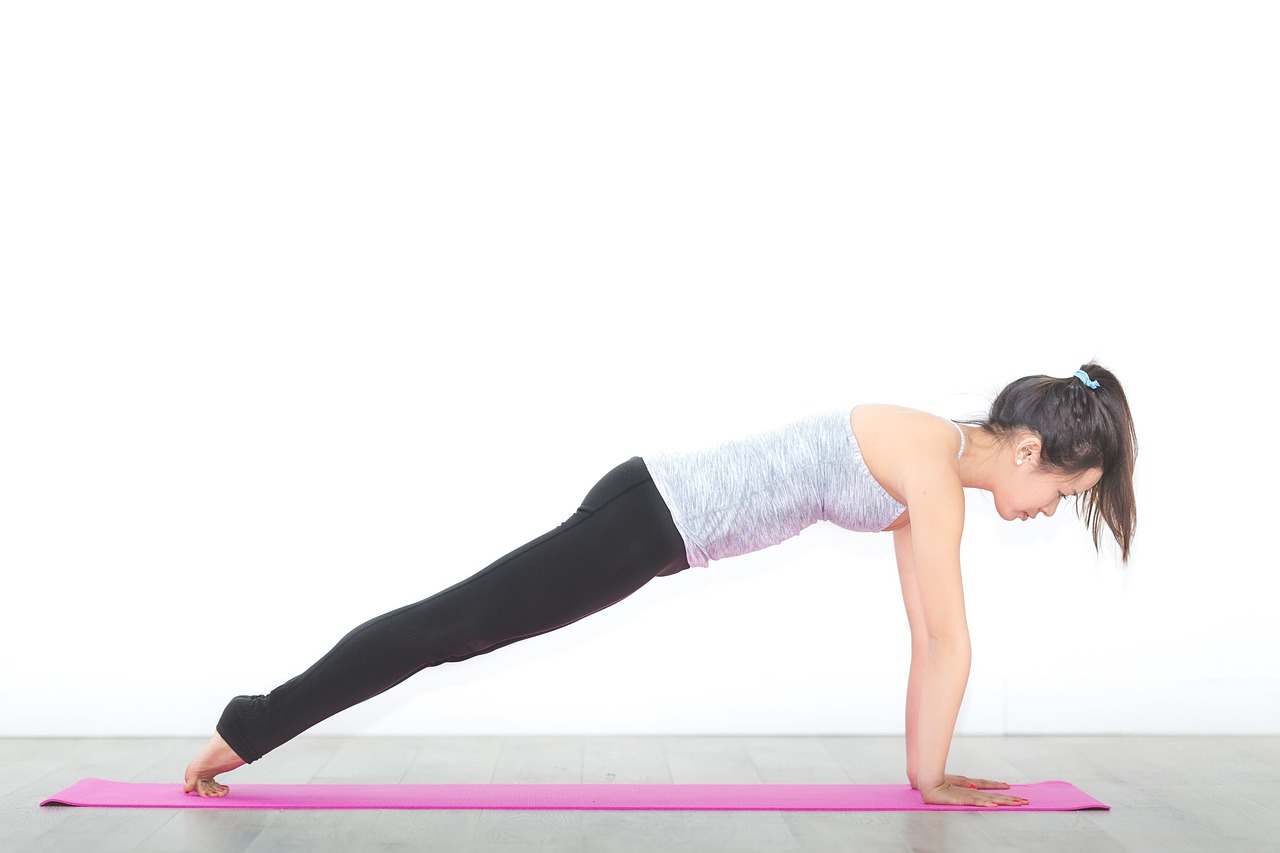
Nutrition and Hydration
When it comes to disaster survival, nutrition and hydration are not just afterthoughts; they are fundamental pillars that can make or break your ability to respond effectively in emergencies. Imagine being in a situation where you need to evacuate quickly, but your body feels like a lead weight because you haven’t fueled it properly. It’s like trying to drive a car on empty—eventually, you’re going to stall. That’s why understanding how to maintain optimal nutrition and hydration is essential for anyone looking to enhance their physical fitness and survival skills.
A well-balanced diet provides the body with the necessary nutrients to perform at its best, especially during high-stress situations like disasters. Think of your body as a high-performance machine; if you don’t give it the right fuel, it won't run efficiently. A diet rich in whole foods—fruits, vegetables, lean proteins, whole grains, and healthy fats—ensures that your body has the energy it needs to tackle any challenges that come your way. For instance, complex carbohydrates can provide sustained energy, while proteins are crucial for muscle repair and recovery.
Moreover, hydration plays a critical role in maintaining both physical and cognitive performance. Dehydration can lead to fatigue, confusion, and impaired decision-making, which are the last things you want when you’re trying to navigate a crisis. It’s essential to understand your hydration needs, which can vary based on factors such as climate, activity level, and individual health conditions. On average, aiming for about 2 to 3 liters of water per day is a good starting point, but this can increase significantly during physical exertion or in hot weather.
To help visualize the importance of nutrition and hydration in disaster preparedness, here’s a simple table outlining key nutrients and their roles:
| Nutrient | Role in Disaster Survival |
|---|---|
| Carbohydrates | Provide energy for physical activity and mental focus. |
| Proteins | Support muscle repair and recovery, essential for physical tasks. |
| Fats | Offer a concentrated energy source and support cellular functions. |
| Vitamins & Minerals | Boost immune function and overall health, helping you stay resilient. |
Now, let’s talk hydration strategies. Drinking water regularly throughout the day is crucial, but it’s also important to monitor your body’s signals. Thirst is an obvious indicator, but other signs like dark urine or fatigue can be red flags. In disaster scenarios, having emergency water supplies is vital. Aim to store at least one gallon of water per person per day for a minimum of three days. This ensures that you have enough water for drinking, cooking, and sanitation.
Ultimately, the combination of proper nutrition and hydration equips you with the stamina and mental clarity needed for effective disaster response. Just like a soldier prepares for battle, you too must prepare your body to face the unexpected. By prioritizing what you eat and drink, you’re not just investing in your health; you’re investing in your ability to survive.
- How much water should I drink daily? Aim for about 2 to 3 liters, adjusting based on activity and climate.
- What foods are best for disaster preparedness? Focus on non-perishable items like canned goods, dried fruits, nuts, and energy bars.
- Can I rely on sports drinks for hydration? While they can be beneficial, water is usually the best choice for hydration unless you're engaging in prolonged physical activity.

Importance of a Balanced Diet
A balanced diet is not just a buzzword; it's a fundamental pillar of physical fitness, especially when it comes to disaster preparedness. Think of your body as a high-performance vehicle. Just as a car needs the right fuel to run smoothly, your body requires a mix of nutrients to function optimally. When disasters strike, your body may be called upon to perform at its best, whether that means running to safety or lifting heavy objects to clear a path. Without the proper nutrition, you could find yourself running on empty, unable to respond effectively.
A well-rounded diet includes a variety of food groups that provide essential nutrients. These nutrients can be broadly categorized into macronutrients and micronutrients. Macronutrients include carbohydrates, proteins, and fats, while micronutrients consist of vitamins and minerals. Each of these plays a unique role in maintaining your health and enhancing your physical capabilities.
For instance, carbohydrates are your body's primary source of energy. When you consume foods rich in carbs, such as whole grains, fruits, and vegetables, you fuel your muscles and brain, enabling you to think clearly and act quickly in emergencies. On the other hand, proteins are crucial for muscle repair and recovery. Consuming adequate protein from sources like lean meats, legumes, and dairy can help you build strength and resilience, which are vital in physically demanding situations.
Fats, often misunderstood, are equally important. Healthy fats found in avocados, nuts, and olive oil help with hormone production and nutrient absorption, contributing to overall well-being. Moreover, vitamins and minerals, obtained from a colorful array of fruits and vegetables, support your immune system and reduce the risk of illness, ensuring you're in top shape when disaster strikes.
To illustrate the importance of a balanced diet, consider the following table that outlines some key nutrients and their benefits:
| Nutrient | Sources | Benefits |
|---|---|---|
| Carbohydrates | Whole grains, fruits, vegetables | Provides energy for physical activity |
| Proteins | Lean meats, legumes, dairy | Supports muscle repair and recovery |
| Fats | Nuts, seeds, olive oil | Helps with hormone production and nutrient absorption |
| Vitamins | Fruits, vegetables | Supports immune function and overall health |
| Minerals | Leafy greens, nuts, seeds | Contributes to bone health and muscle function |
In conclusion, a balanced diet is not merely a suggestion; it's a necessity for anyone looking to enhance their physical fitness and readiness for unforeseen events. By nourishing your body with the right mix of nutrients, you equip yourself with the energy, strength, and resilience needed to face any disaster head-on. Remember, in the chaos of an emergency, your body will perform based on what you have fed it. So, make every meal count!
- What is a balanced diet? A balanced diet includes a variety of foods from all food groups, providing necessary nutrients for optimal health.
- How does nutrition affect physical fitness? Proper nutrition fuels your body, enhances performance, and aids in recovery, making it essential for physical fitness.
- Can I prepare for disasters with just exercise? While exercise is crucial, a balanced diet complements fitness by providing the energy and nutrients needed during emergencies.
- What are some quick nutrition tips for disaster preparedness? Focus on non-perishable, nutrient-dense foods and maintain hydration to ensure your body is ready for action.

Hydration Strategies
Staying properly hydrated is not just a matter of quenching your thirst; it's a crucial element of maintaining physical fitness, especially in disaster scenarios. When the going gets tough, your body's need for water increases significantly. Imagine being caught in a chaotic situation where every drop counts—literally. In these moments, understanding effective hydration strategies can make all the difference between thriving and merely surviving.
First and foremost, it’s essential to recognize that hydration needs vary based on several factors, including your activity level, the climate, and even your health status. A good rule of thumb is to aim for at least 8-10 cups of water per day, but this can increase dramatically if you're engaging in intense physical activity or are in a hot environment. During emergencies, you might find yourself sweating more than usual, which means you need to replenish lost fluids frequently.
One effective strategy is to carry a reusable water bottle with you at all times. This not only serves as a reminder to drink water regularly but also helps you track your intake. You might want to consider a bottle that includes measurements, so you can visually gauge how much water you’ve consumed throughout the day. Additionally, keep in mind that hydration is not solely about drinking water. Foods with high water content, such as fruits and vegetables, can also contribute to your overall hydration levels. For example:
| Food Item | Water Content (%) |
|---|---|
| Watermelon | 92% |
| Cucumber | 95% |
| Strawberries | 91% |
| Spinach | 91% |
In addition to these strategies, it's vital to be mindful of the signs of dehydration. Symptoms like dry mouth, fatigue, dizziness, or dark-colored urine can indicate that your body is in need of fluids. If you experience these signs, don’t wait—drink water immediately. Moreover, during emergencies, you might need to ration your water supply. In such cases, prioritize drinking small amounts frequently rather than gulping down large quantities at once, as this can lead to discomfort and may not be as effective for hydration.
Lastly, consider incorporating electrolyte-rich drinks into your hydration strategy, especially if you're sweating profusely. These drinks can help replenish essential minerals lost through sweat, ensuring that your body remains in optimal working condition. However, be cautious with sugary drinks, as they can lead to a quick spike in energy followed by a crash, leaving you feeling worse off than before.
To sum it up, effective hydration strategies are a key component of your disaster preparedness plan. By understanding your hydration needs, tracking your intake, and recognizing the signs of dehydration, you can enhance your physical fitness and resilience in the face of emergencies. So, the next time you fill up your water bottle, remember—every sip is a step towards better preparedness!
- How much water should I drink daily? Aim for at least 8-10 cups, but increase this if you're active or in a hot environment.
- Can I hydrate with food? Yes! Foods like watermelon and cucumbers have high water content and can help keep you hydrated.
- What are signs of dehydration? Look out for dry mouth, fatigue, dizziness, or dark urine.
- Should I drink electrolytes during emergencies? Yes, especially if you're sweating a lot, as they help replenish lost minerals.
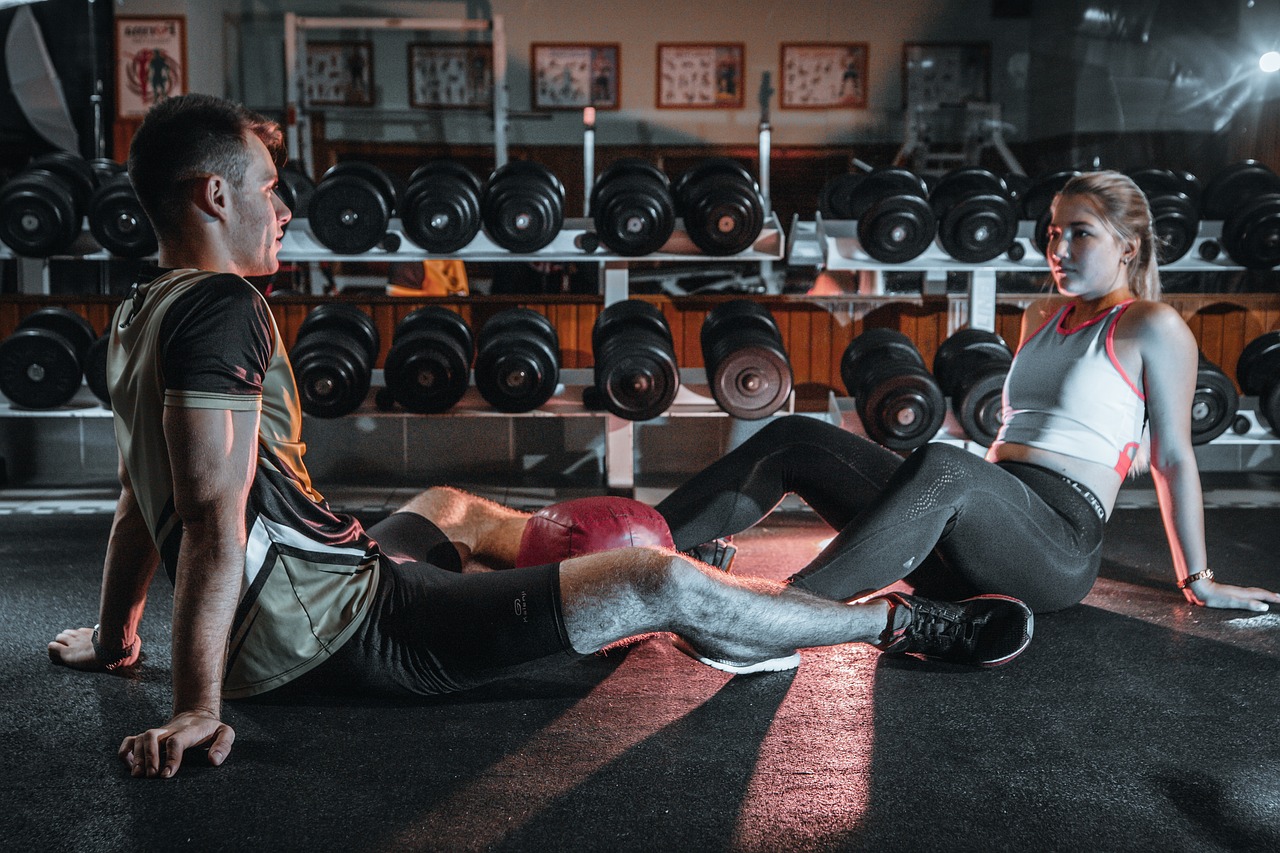
Community Fitness Initiatives
Engaging in community fitness programs is not just about breaking a sweat; it's about building a network of support and resilience that can be invaluable during disasters. When individuals come together to improve their physical fitness, they also create a sense of camaraderie and shared purpose. Think of it like forming a safety net; when one person is prepared, they can help others, and together, they can tackle challenges that might seem insurmountable alone. In essence, community fitness initiatives serve as a platform for collective preparedness, ensuring that neighborhoods are not just fit but also ready to face potential disasters together.
One of the most effective ways to foster this sense of community is through group training sessions. These sessions can vary from organized runs in the park to strength training classes held at local gyms. Not only do they provide an opportunity for individuals to improve their fitness levels, but they also encourage participants to motivate each other. Imagine a group of friends running together; when one person feels like giving up, the others can provide that extra push, making the experience more enjoyable and less daunting. This shared journey not only enhances physical fitness but also strengthens social bonds, which are crucial in times of crisis.
Furthermore, joining or forming Community Emergency Response Teams (CERT) can significantly enhance collective skills and preparedness. These teams are often composed of volunteers who are trained to respond to emergencies within their communities. They learn essential skills such as first aid, fire safety, and disaster response techniques. By participating in such programs, individuals not only improve their fitness through the physical demands of training but also gain practical knowledge that can save lives during real emergencies. It's like equipping yourself with a toolbox; the more tools you have, the better prepared you are to handle any situation that arises.
To illustrate the impact of community fitness initiatives, consider the following table that outlines the benefits of participation:
| Benefit | Description |
|---|---|
| Enhanced Physical Fitness | Regular participation in community fitness activities improves overall health and stamina. |
| Social Connections | Building friendships and support networks that can be vital during emergencies. |
| Skill Development | Learning valuable skills that can aid in emergency situations. |
| Increased Motivation | Group dynamics encourage individuals to push their limits and stay committed. |
In summary, community fitness initiatives are a powerful way to prepare for disasters while simultaneously enhancing personal health and social connections. By participating in group activities and forming emergency response teams, individuals can cultivate a resilient community that is not only fit but also equipped to face challenges together. So, why not lace up those sneakers and join a local fitness group? You might just find that the journey to fitness is even more rewarding when shared with others.
Q1: How can I find community fitness programs in my area?
A1: Check local community centers, gyms, or online platforms like Meetup to find fitness groups that align with your interests.
Q2: What types of training should I focus on for disaster preparedness?
A2: Focus on a mix of cardiovascular fitness, strength training, and flexibility exercises to ensure you are well-rounded and ready for various physical challenges.
Q3: Are community fitness initiatives suitable for all ages?
A3: Absolutely! Many community programs are designed to be inclusive, offering modifications to suit different fitness levels and age groups.
Q4: How often should I participate in group training sessions?
A4: Aim for at least 2-3 sessions a week to build fitness and foster relationships, but find a frequency that works best for you and your schedule.
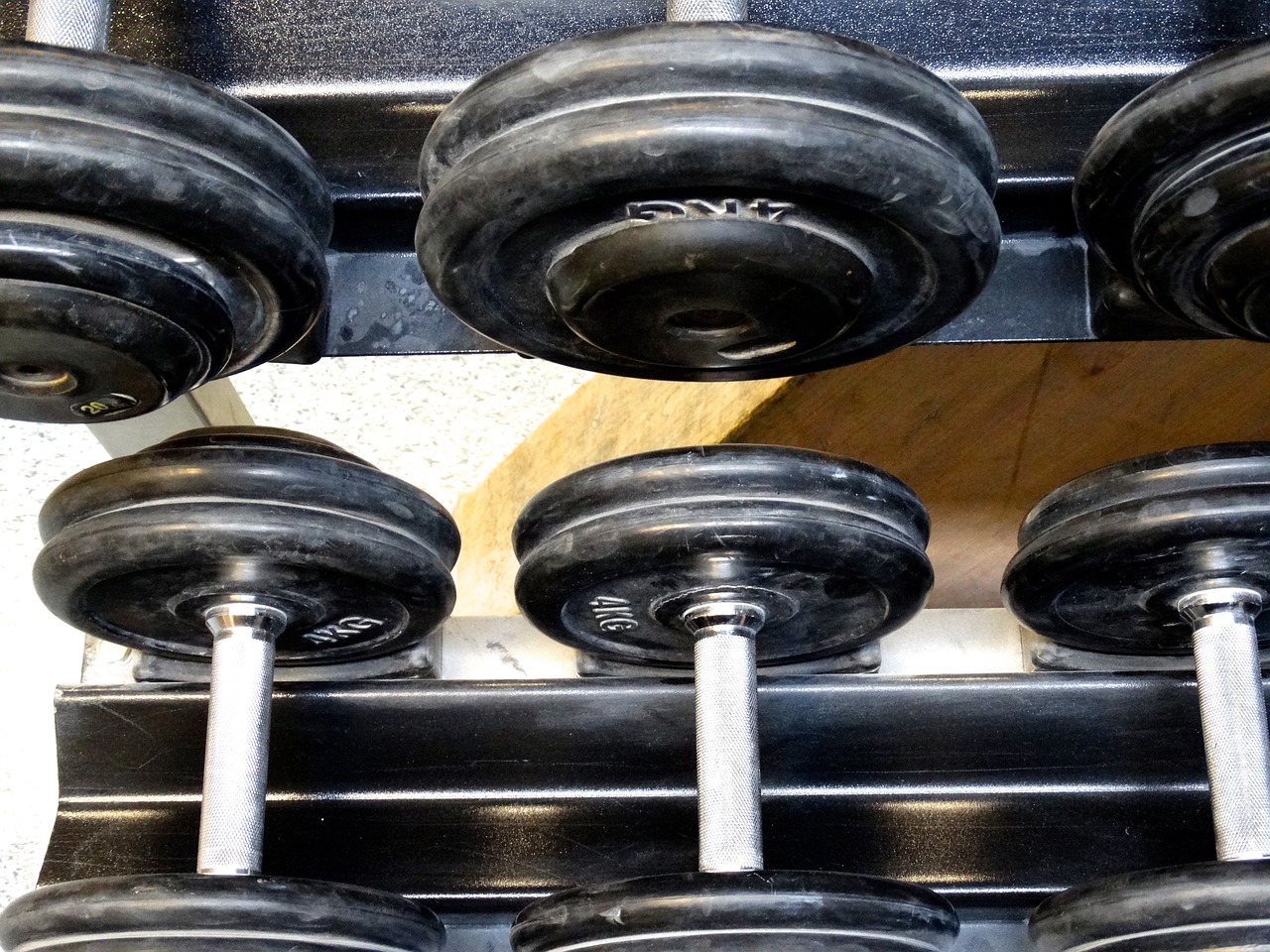
Group Training Sessions
Group training sessions are a fantastic way to enhance physical fitness while simultaneously building a sense of community. Imagine the energy of a room filled with individuals all working towards a common goal—survival readiness. These sessions not only provide motivation but also foster a supportive environment where participants can encourage one another. When you’re sweating it out with friends or neighbors, the experience becomes more enjoyable and less of a chore. Plus, there's something about collective effort that makes the grind feel lighter!
Engaging in group training can take many forms, from organized boot camps to yoga classes in the park. These activities help individuals develop essential skills while also improving their physical fitness. For instance, a typical group training session might include:
- Warm-up exercises: These are crucial for preparing the body for intense physical activity, reducing the risk of injury.
- Cardiovascular drills: Activities like relay races or obstacle courses can simulate emergency scenarios, enhancing stamina and agility.
- Strength training: Utilizing body weight or resistance bands, participants can build muscle strength, which is essential for lifting and moving during a disaster.
- Cool-down and stretching: Ending with a cool-down period helps in recovery and flexibility, preparing the body for future sessions.
Moreover, group training sessions often provide opportunities for skill-sharing. For example, one participant might have experience in first aid, while another could be a fitness enthusiast. This exchange of knowledge can be incredibly beneficial, as it equips everyone with a broader skill set for disaster preparedness. It’s like a potluck where everyone brings their best dish—except in this case, you’re sharing survival skills!
Another significant advantage of group training is the accountability it creates. When you commit to a group, you're less likely to skip out on your workouts. The thought of letting your teammates down can be a powerful motivator. Additionally, many communities offer free or low-cost group training sessions, making it accessible for everyone. So, whether you’re a seasoned athlete or just starting your fitness journey, there's a place for you in these sessions.
In summary, group training sessions not only enhance individual fitness levels but also build a network of support and preparedness within the community. By participating in these activities, you’re not just working out; you’re taking proactive steps to ensure you and your neighbors are ready for whatever challenges may come your way. So why not gather a few friends or neighbors and start training together? You never know when those skills might come in handy!
Q1: How often should I participate in group training sessions?
A1: Ideally, aim for at least 2-3 times a week to see significant improvements in your fitness levels and preparedness.
Q2: Do I need to have prior fitness experience to join a group training session?
A2: No, group training sessions are typically designed to accommodate all fitness levels. Just communicate your needs with the instructor.
Q3: What should I bring to a group training session?
A3: It’s best to bring water, a towel, comfortable clothing, and any personal fitness equipment you might want to use.
Q4: Are there any costs associated with group training sessions?
A4: Many community programs are free or low-cost, but it's always good to check ahead of time.
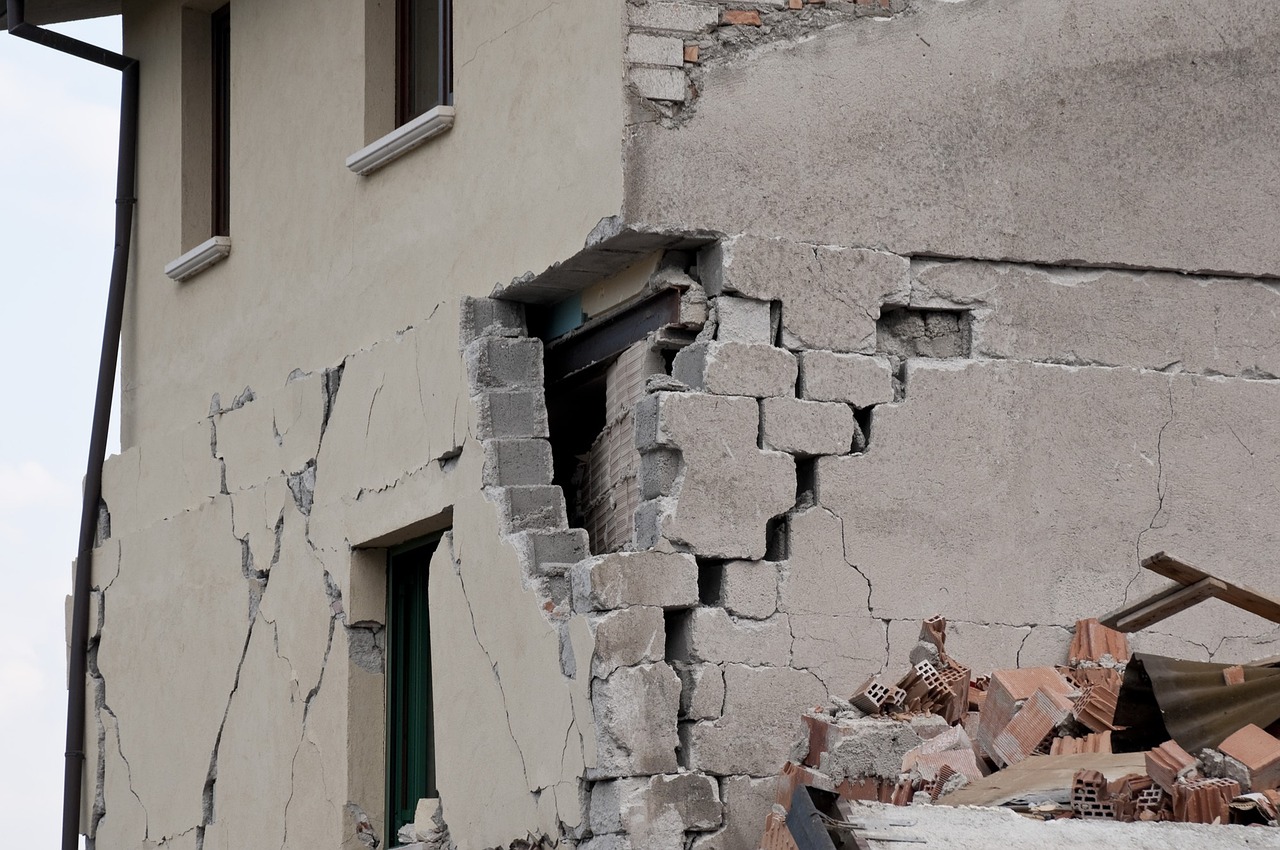
Community Emergency Response Teams
Community Emergency Response Teams (CERT) are a vital part of disaster preparedness at the local level, designed to equip individuals with the skills and knowledge necessary to respond effectively in emergencies. These teams are made up of trained volunteers who are ready to assist their communities during crises, whether it’s a natural disaster, a public health emergency, or any other significant incident. By joining a CERT, individuals not only enhance their own preparedness but also contribute to the collective resilience of their neighborhoods. Imagine a tightly-knit group of neighbors, all equipped with the tools and training to face emergencies together—this is the essence of a CERT.
Participating in a CERT program offers numerous benefits. First and foremost, it fosters a sense of community and collaboration among residents. When people come together to learn and prepare, they build relationships that can be invaluable during times of crisis. Additionally, the training provided through CERT programs covers a wide range of emergency response skills, including:
- Basic first aid and medical operations
- Fire safety and suppression techniques
- Search and rescue operations
- Disaster psychology and community support
These skills not only empower individuals to take action during a disaster but also instill confidence. Knowing that you can make a difference in an emergency can be incredibly reassuring. Moreover, CERT members often participate in drills and exercises that simulate real-world scenarios, allowing them to practice their skills in a controlled environment. This hands-on experience is crucial for building muscle memory and understanding the dynamics of emergency situations.
One of the most impactful aspects of CERT is its focus on education and outreach. Teams often engage in community events to raise awareness about disaster preparedness, sharing valuable information and resources with their neighbors. This community-centric approach not only prepares individuals for emergencies but also strengthens the overall safety net within the community. When everyone is informed and prepared, the entire neighborhood becomes more resilient.
In addition to the practical training and community engagement, being part of a CERT can also be a fulfilling experience on a personal level. Many volunteers find a deep sense of purpose in helping others and contributing to the greater good. It’s about transforming fear into action and empowering oneself and others to face challenges head-on. So, if you’re looking for a way to make a difference in your community while enhancing your own skills, consider joining a Community Emergency Response Team. Together, we can create a safer, more prepared world.
Q1: What is the main goal of Community Emergency Response Teams?
A1: The primary goal of CERT is to train volunteers to assist their communities during emergencies, enhancing overall preparedness and resilience.
Q2: How can I join a Community Emergency Response Team?
A2: You can typically join a local CERT by contacting your community’s emergency management office or visiting their website for information on upcoming training sessions.
Q3: Do I need prior training to join CERT?
A3: No prior training is necessary. CERT programs are designed to provide all the training you need to become an effective member of the team.
Q4: What kind of time commitment is involved with being part of a CERT?
A4: The time commitment can vary, but most teams require members to attend regular training sessions and participate in drills and community events.
Q5: Are CERT members paid for their service?
A5: No, CERT members are volunteers and do not receive payment. The focus is on community service and personal development.
Frequently Asked Questions
- Why is physical fitness important for disaster survival?
Physical fitness is crucial during disasters because it enhances your ability to respond quickly and effectively in emergencies. Being physically fit improves your stamina, strength, and flexibility, allowing you to navigate hazardous environments, carry heavy loads, and maintain energy levels when it matters most.
- What types of exercises should I focus on for disaster preparedness?
It’s essential to incorporate a mix of cardiovascular, strength, flexibility, and mobility exercises into your routine. Cardiovascular workouts boost endurance, strength training enhances your physical capability, and flexibility exercises help prevent injuries. Mobility exercises ensure you can move efficiently in unpredictable situations.
- How can I create a personalized disaster fitness plan?
Start by assessing your current fitness levels to identify strengths and weaknesses. Set realistic goals that you can achieve consistently. Then, design a training program that includes a variety of exercises tailored to improve your overall fitness and prepare you for potential disaster scenarios.
- What role does nutrition play in physical fitness for disaster survival?
Nutrition is a key component of physical fitness, as it provides the necessary energy and nutrients your body needs to perform at its best. A balanced diet supports recovery and enhances your overall physical performance during high-stress situations, ensuring you have the stamina to respond effectively in emergencies.
- How important is hydration during emergencies?
Staying hydrated is vital for maintaining optimal physical performance and cognitive function. In disaster situations, dehydration can lead to fatigue and impaired decision-making, making it essential to understand your hydration needs and implement effective strategies to ensure you remain properly hydrated.
- Can community fitness initiatives really make a difference?
Absolutely! Community fitness programs foster collective preparedness, building resilience within neighborhoods. When individuals train together, they not only motivate each other but also develop vital skills that enhance the community's ability to respond to disasters effectively.
- What are some effective cardiovascular training routines?
Incorporating both interval training and steady-state cardio into your routine can significantly improve cardiovascular fitness. Interval training involves alternating between high-intensity bursts and lower-intensity recovery periods, while steady-state cardio focuses on maintaining a consistent pace over a longer duration.

